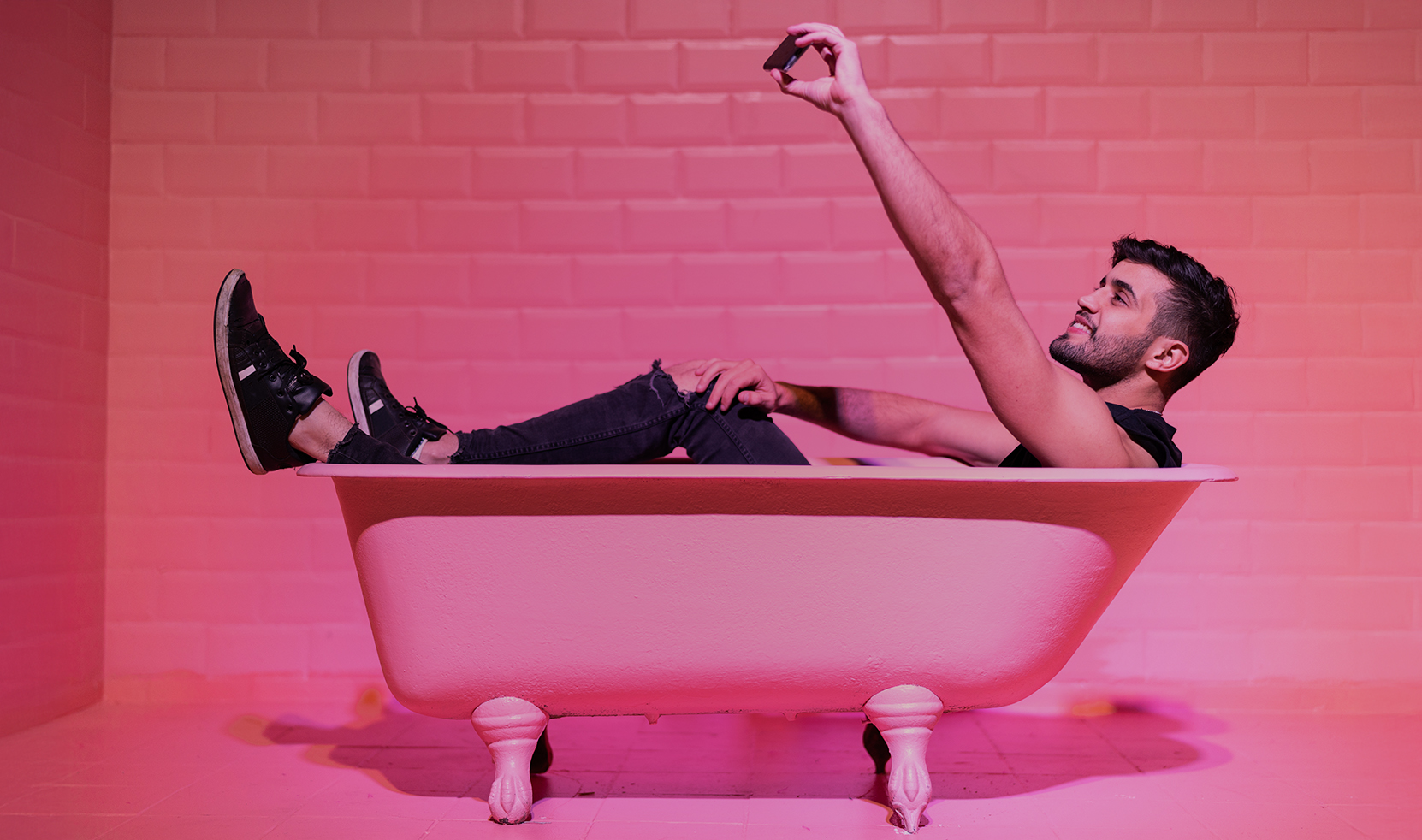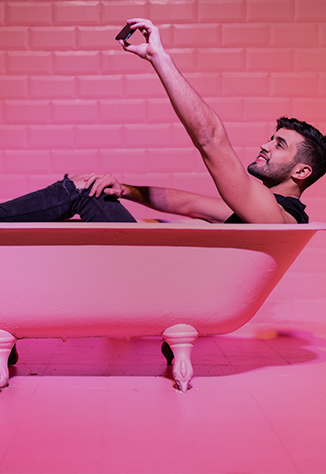The face behind the blog
Marjolein Vugts
Managing director uniting strategy, creativity and culture. Moves brands forward, keeps them on course and helps them grow sustainably.
Head to the contact page or email to marjolein@gi.nl


Influencers are – very briefly put and as you probably already know – people who influence others. And that works. Just think back to that girl in your class who was the first to show up with a yo-yo. You just had to have one too, and before you knew it, the whole class was playing with one. That girl was the influencer of the playground, and that’s exactly who you’re looking for with influencer marketing, whether you’re in the B2C or B2B market: someone who fits your brand and becomes the ultimate ‘playground promoter.’ But finding the right match can be a challenge. How do you entrust your brand to an influencer?
Influencers are – very briefly put and as you probably already know – people who influence others. And that works. Just think back to that girl in your class who was the first to show up with a yo-yo. You just had to have one too, and before you knew it, the whole class was playing with one. That girl was the influencer of the playground, and that’s exactly who you’re looking for with influencer marketing, whether you’re in the B2C or B2B market: someone who fits your brand and becomes the ultimate ‘playground promoter.’ But finding the right match can be a challenge. How do you entrust your brand to an influencer?
Before answering that question, let’s take a closer look at this playground example as a micro-version of the world around us. The same roles and patterns apply to ourselves too. Take me as an example: whenever I’m looking for a good book to take on holiday, there’s always that one friend I turn to for advice. And it’s not just me—my whole friend group relies on him. He’s our go-to book influencer. Bol.com might also suggest ‘must-read’ books, but I still trust my book buddy. It’s the same with recipes or car advice—I always know who to ask. In short, we naturally listen to people we trust and know. But an influencer is more than that; they’re someone your customers identify with and feel connected to. Secretly, they might even aspire to be like your influencer. That identification is key. For example, in the Netherlands, Yvon Jaspers is a well-known TV presenter who hosts a show called Boer zoekt Vrouw (Farmer Wants a Wife), where farmers look for love. She’s associated with an honest, down-to-earth image and is known for her wholesome vibe. So while she’d be a great fit to promote farmer’s yogurt, she probably wouldn’t have the same credibility when trying to sell glitter lipstick. Roy Donders, a flamboyant stylist and TV personality, would be a much better match for that product.
But, how does this principle work for B2B? Wellm : in exactly the same way! The difference is that in B2B, a subject matter expert is often more appealing than a celebrity. These experts are referred to as nano- or micro-influencers: people with around 5,000 to 50,000 followers who are directly connected to your niche market. While they might not have the massive reach of a celebrity, they’re more likely to provide the targeted audience your brand needs. After all, it’s much better to have 5,000 (or even just 10!) genuinely interested followers than 5 million with no real connection: people who follow just because there’s something to win or because others are doing it. So, make sure to check if the influencer’s followers align with your brand.
You and your customer both like to reap the benefits of your relation in the long run. So, don’t go for a quick win with influencer marketing. While that short-term boost might feel great, it won’t leave you with much in the end. Let me explain with a clear example that highlights the difference between long-term influencer marketing and a quick win. Let’s take a step back into B2C for this one; after all, we’re all consumers. Blokker, a Dutch retail chain, ran a commercial featuring Sex and the City star Sarah Jessica Parker. In the ad, she cooks a lovely Christmas dinner for her family and friends using all kinds of Blokker products. As a fan, you’d love it, so in the short term, it was a success. But this isn’t the kind of influencer marketing you can rely on for the long term. Let me explain why...
First of all, we all know 'SJP' is being paid handsomely to wave around a Blokker frying pan. She’s a Hollywood star, and let’s be honest: there’s no way she’s actually buying her pans at Blokker. In fact, I can’t even picture SJP anywhere near a frying pan, let alone a Blokker store (please prove me wrong, SJP). So, there’s no connection, no relationship between the brand and the influencer. And that’s my point: after this ad, SJP never appeared in any Blokker campaign again. They went for a quick boost in brand recognition, but in the long run, we all know how things turned out for Blokker...
Another drawback is that the wrong influencer can actually harm your brand, even in B2B. For instance, if SJP can afford that pan, I might start wondering if it’s even in my price range. Meanwhile, another part of your audience might find her unbearable and decide never to shop at that ‘Sex and the City’ store again. That’s why it’s so important to create a strong connection between your brand values and the person representing your brand. Focus on the long term! This is just as crucial in B2B, where your audience tends to be even more knowledgeable and can spot insincerity from miles away.
In other words: make sure there’s an authentic and genuine connection, to build a loyal following of genuinely interested people.
A solid, long-term partnership with your influencer is crucial. Make sure to involve them in every step of the process. But most importantly: let go. Let your influencer contribute their ideas on how to present your product, service, or brand to their audience. After all, the influencer knows their followers better than anyone. You might want to steer things in a specific direction, but if your influencer thinks that doesn’t align with their audience, trust their judgment. Combine your expertise with theirs. By giving your influencer this freedom, they’ll feel more connected to your brand and genuinely engaged. This also nurtures intrinsic motivation.
Here’s the key question again: are you more likely to trust someone who’s simply being paid, or someone who’s truly a fan of your brand? It’s a never-ending, booming cycle when influencer marketing is done right. This applies just as much in B2B. A great example is SAP (software solutions), which excels in influencer marketing by creating collaborations that bring value to both parties. They specifically look for people who radiate trust and reinforce SAP’s brand image. In return, SAP provides platforms for knowledge sharing and visibility. It’s all about give and take, resulting in a true win-win.
I’m convinced that influencer marketing truly works when you create a strong connection between your brand, your influencer, and your audience, even in B2B. You need someone who genuinely clicks with your brand, product, or service, feels real passion for it, and knows how to convey that. When that connection is in place, entrusting your brand to an influencer isn’t hard or scary at all: it becomes a partnership that strengthens both sides.
So, let’s go back to the playground with this advice: find your own playground promoter. The followers, the influence, and the playground effect (like the yo-yo we talked about earlier, remember?) will naturally follow.
Need help finding the right influencer? We’re dedicated to understanding your brand, so you can confidently leave that tast to us! Send us an email and we'll get back to you as soon as we can!